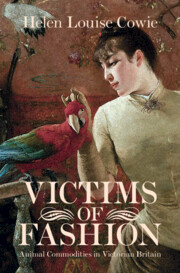Book contents
Introduction
Published online by Cambridge University Press: 29 October 2021
Summary
In 1894, a journalist published an article in The Standard advocating the establishment of a kangaroo farm in England. Over the course of several pages he enumerated the multiple benefits to be gained from acclimatising this antipodean marsupial, whose hide produced ‘excellent leather’ for making boots and gloves, whose thighs ‘taste much like those of the reindeer’, and whose tail made ‘a rich and most delicious soup’. Despite understandable fears to the contrary, the journalist insisted that kangaroos would do well in similar terrain to sheep and were ‘sufficiently hardy animals to withstand even the trying variability of our English winters’. He also claimed that they would require comparatively little looking after, ‘[a]ccommodation in the shape of open shedding’ providing ‘sufficient shelter to keep the animals in health’ and a seasonal supply of ‘hay and other food’ meeting their dietary needs. Although its proponent’s primary concern was profitability, the scheme was potentially timely, as kangaroo numbers were rapidly decreasing in Australia due to overhunting and competition with sheep. Writing just five years earlier, another journalist had reported: ‘Large quantities of kangaroos are killed for the sake of the skin, which has become fashionable as a material for the making of boots, shoes and other articles, and unless this indiscriminate slaughter is stopped the kangaroo will soon have shared the fate of the dodo.’
- Type
- Chapter
- Information
- Victims of Fashion , pp. 1 - 16Publisher: Cambridge University PressPrint publication year: 2021



